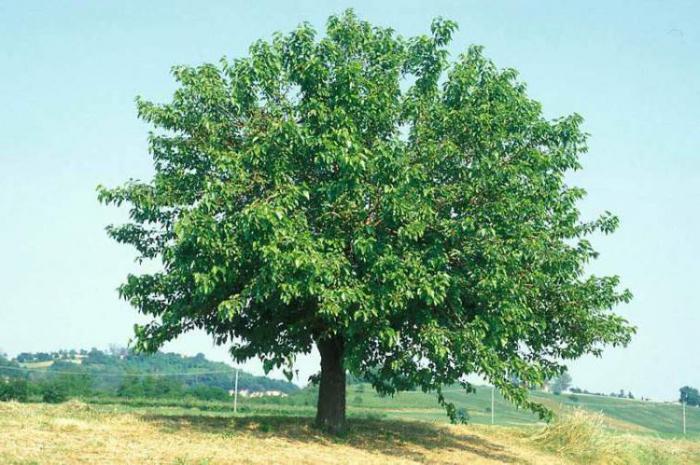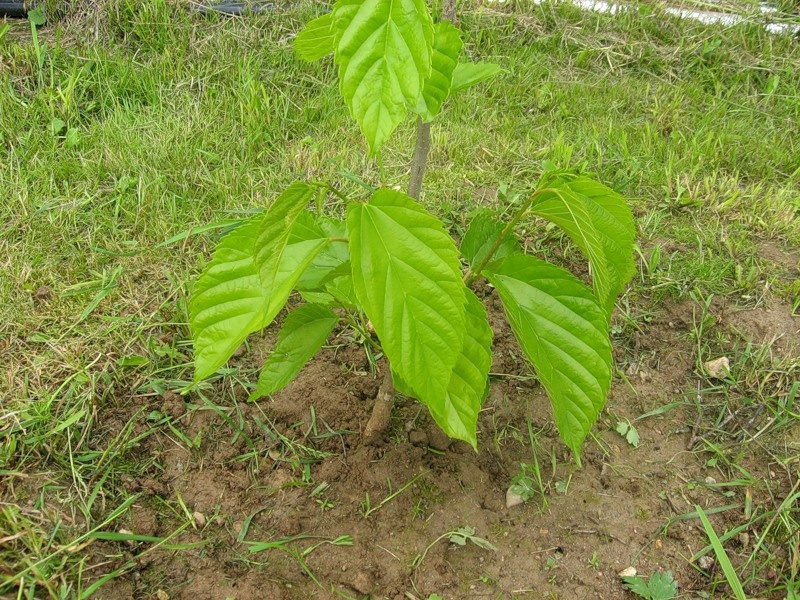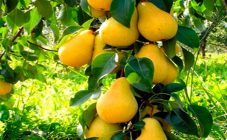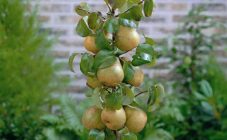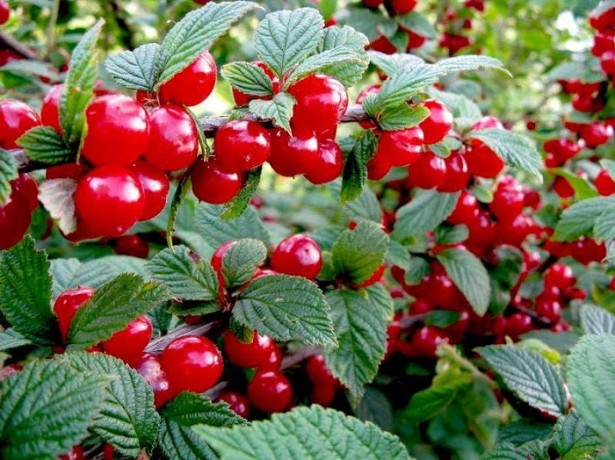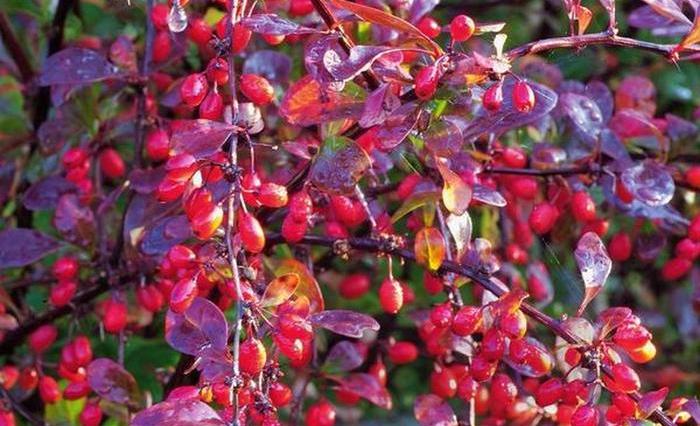In many gardens, you can find a beautiful tree, the branches of which gently fall to the ground. Unusual shaped fruits are formed on it, the taste of which surprises everyone who tries them for the first time. This plant is a mulberry, or mulberry, and it will not be difficult to grow it on your site.
Description of culture
Breeders have bred a wide variety of species and varieties of mulberry trees. The height of the tree can range from 15 to 30 m. Some species can grow up to 45 m. Their lifespan reaches 400 years.
A distinctive feature of the mulberry is that male or female flowers can develop on the same tree. There are also species that form flowers of both sexes at the same time.
The bark on the trunk can be brown with a silvery tint. Branches in relation to the trunk are located at an angle of 50 degrees. The green, ovoid leaves are edged with small teeth. Their back is covered with light down.
The flowering period of the mulberry tree begins in the middle of spring. Small white or pink flowers are collected in inflorescences, catkins or racemes. The harvest ripens in the middle of summer. The berries look like blackberries, they are purple, pink or white .. They consist of a large number of granules that have grown together. The length of the berries can be from 2 to 5 cm.
Juice is prepared from mulberry berries, compotes and preserves are cooked. They have a low level of transportability and a short shelf life.
Growing and caring for mulberries in Siberia does not cause any particular difficulties, because the homeland of the plant is the Far East.
The most common types are:
- White mulberry (Victoria, Luganochka, White tenderness).
- Black mulberry (Black Baroness, Darkie, Hartut).
Mulberry leaves, bark and roots contain the following components:
- resins;
- tannins;
- acids;
- copper;
- phosphorus;
- flavonoids;
- zinc.
A large number of useful substances are also found in berries:
- antioxidants;
- thiamine;
- ascorbic and folic acid.
The branches of the plant, its roots and bark are used to make expensive fabrics. Mulberries have diaphoretic, anti-inflammatory and diuretic effects. A decoction of mulberry berries has a good effect in the treatment of colds, diarrhea, constipation and bronchial asthma.
Antioxidants heal human blood vessels by strengthening their walls. Mulberry juice is useful for people suffering from hypertension or dysfunction of the cardiovascular system.
Different types of mulberry can have a crown of various shapes: pyramidal, spherical, columnar. This allows you to use mulberry trees as a decoration for the territory.
Mulberry in the Urals: planting and care
Mulberry in the Urals nestled just as well as in the Moscow region, Barnaul, Primorsky Territory, and also in Nizhny Novgorod. Does mulberry grow in Bashkiria? Yes, the climate of this region is similar to the conditions of the Moscow region.
To grow mulberries outdoors in Siberia, you need to pay special attention to the choice of tree varieties. It must be frost and winter hardiness.
How to plant mulberries? You can grow a silk garden from both seed and seedling.The seeds can be planted in spring or fall. They must first be treated with a growth stimulant. Thanks to this, they will germinate much faster. The germination process can also be accelerated by soaking them for a day alternately in cold and warm water.
For planting seeds, it is better to choose a bright place, without drafts. As for the soil, the mulberry tree will grow better on loamy or sandy loamy soils. If the land is sandy, the tree will form a large number of adventitious roots, which contribute to the consolidation of the sand.
Before growing a mulberry with seeds, it is necessary to make furrows in the ground no more than 5 cm deep. Mulberry seeds are quite small, but despite this, they are rarely sown. It is recommended to sow seeds in moist soil.
After the emergence of seedlings, they must be thinned out. The distance between young plants should be within 3-5 meters. Otherwise, the growth of the root system of mature trees will be difficult, which will negatively affect the yield. After 4 - 5 years, the first crop can be harvested.
Growing and caring for white mulberry in Siberia is practically no different from agricultural technology in other regions, except that you need to start with planting tree seedlings in the spring.
To grow mulberry seedlings, you need to dig a planting hole 50 X 50 cm. Mix the soil extracted when digging a hole with humus or rotted compost, adding potassium-phosphate fertilizers or superphosphate to the mixture. At the bottom of the pit, lay out a layer of gravel, tamping it well. The layer thickness should be no more than 20 cm. It will serve as a drainage system.
Having placed the mulberry seedling in the planting hole, its roots must be carefully spread and sprinkled with the prepared soil mixture. The horse's neck of the tree should be located at a height of 5 - 6 cm from ground level. After that, the seedling is watered with settled warm water, and the near-stem circle is mulched. For this, you can use sawdust or needles. Thus, it will be possible to maintain soil moisture for several days.
How to care for mulberries? This question arises for many novice gardeners. Mulberry care consists in the correct watering regime, crown formation and tree feeding. Experienced gardeners recommend watering mulberries up to 5-6 years of age. If the soil is sandy, watering is carried out every week. In this case, about 16 liters of liquid must be poured under one tree.
If the tree grows on clay soil, watering is carried out in moderation, otherwise the development of the root decay process cannot be avoided. By the middle of summer, the mulberry has time to fully absorb moisture. This slows down the growing process, which does not require a large amount of water. From this time on, watering the tree can be stopped.
The weeping species of mulberry tree does not respond well to excessive nitrogen fertilization. In the spring, it is recommended to feed the trees with a urea solution. Such root feeding protects the plant from the development of the larvae of harmful insects, and also gives the tree additional strength for the formation of fruits.
Before the beginning of the flowering period, superphosphate is introduced into the soil. If the soil on the site is not fertile enough, you need to apply organic fertilizers every 30 - 40 days. Humus or compost can be used as top dressing. To ensure reliable protection of the mulberry tree from parasites of fruit trees, it must be treated with fungicides or insecticides twice a year.
For the tree to have an attractive appearance, and the harvest on it to be abundant, one cannot do without crown formation. It is recommended to start pruning 2 - 3 years after planting in a permanent place. When performing sanitary pruning, dry and damaged branches are removed.Since the green mass of the mulberry tree grows rather quickly, an average of a third of the crown is removed during pruning.
Performing pruning in trees of different varieties has some features, for example, in the standard type of mulberry tree, the crown is supported by the shape of a ball, which is located on a bare trunk in the form of a cap. In a weeping mulberry tree, the crown must be thinned periodically. This removes dry, damaged or weak branches of a dense crown.
In decorative species of mulberry, the crown is given the shape of a ball, pyramid or cone, and the lower part of the trunk is exposed to a height of 2 m.
General recommendations for crown formation:
- for pruning, you need to use clean tools that are free of rust;
- it is necessary to adhere to the established cutting time. Otherwise, you will not get the desired result;
- the procedure must be performed carefully and carefully so as not to remove a healthy and strong branch;
- do not process the sections with garden varnish or varnish-based paint. This can slow down the healing process of the cut site.
It is recommended to prepare the mulberry tree for winter. To do this, its trunk is wrapped in burlap or special cloth. The spreading branches are gently bent to the soil surface and fixed there. Before freezing, they must be covered with sawdust, spruce branches or a layer of soil. Thus, the crown can be protected from frost.
By planting a tree on your site, observing the rules of planting and caring for mulberries (mulberries), you can provide your family with healthy and tasty berries with a minimum of time and effort.
